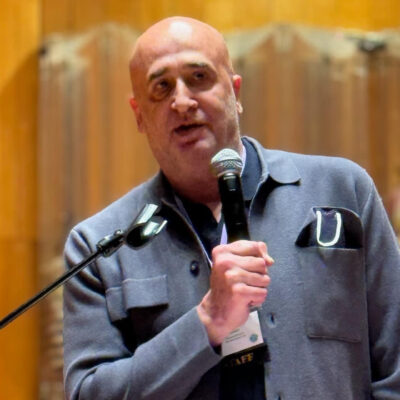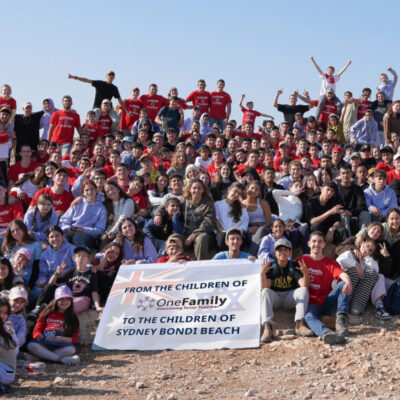What Are We Talking about When We Talk about Engagement?

By Dr. Erica Brown
It was hard to miss the news this summer, which naturally got more attention in England than across the pond. The Norwich Cathedral, built in the eleventh century and one of the largest churches in Europe was busy this past summer with a new offering from August 8th to the 18th. The church arranged for a large carnival ride to be housed in the cathedral itself which drew 20,000 visitors and 10,000 riders, according to the BBC (make sure to watch the video). The Bishop of Lynn, the Right Reverend Jonathan Meyrick, said, “God is a tourist attraction,” and delivered his sermon halfway up the Helter-Skelter, a 50 foot slide in the shape of a lighthouse. He then slid down when he finished his delivery. The dean of the Norwich Cathedral claimed that it was not a gimmick; it was a way to bring people into the church who would otherwise not see it as a space for them. For her, it was both fun and a very serious matter. It was about being accessibility and changing peoples’ opinions about the Church.
Some were excited about this development. Others were skeptical or downright offended by the very idea. The Helter-Skelter was taken apart less than two weeks ago. What remains to be seen is whether those 11 days of a non-gimmick gimmick will make a difference to church attendance. Assuming that the liturgy, ritual calendar and stiff wooden pews stay the same, it’s hard to imagine what will make faith and its attendant observances appealing to those who have left or have never entered a church. Insiders always think the problem is the fear of crossing the threshold; they don’t consider that what lies behind the door may not be sufficiently interesting or engaging.
The unusual Norwich summer brings to mind the years of conversation about engagement across the Jewish organizational map and the lengths we will go to make Judaism attractive. Most American synagogues could not accommodate a fifty-foot ride in their sanctuaries. We are just not good at high ceilings. Many hip rabbis, however, would probably be happy delivering sermons from the top of a modest roller coaster or inside the spinning teacups. But should they? This experiment raises profound questions about the lengths we will go to engage people, what engagement really means and if it’s about meaning or really about marketing.
When engagement is mostly about marketing, we tend to search for new words rather than fundamentally new ideas. A colleague who has also been a Jewish communal professional for decades and I made lists of “word phases” that have come and gone. Many Jewish nonprofits have cycled in and out of Continuity, Peoplehood and the Jewish Renaissance. While scholars generally believe the Italian Renaissance lasted from the 14th to the 17th century, the Jewish Renaissance centered around Jewish learning and seemed to last about 3-5 years before we moved on to other catch words. Perhaps organizations and their leaders should stop using a catch-all word when unsure what the word really means or what actions are required to make the word translate into action.
When terms are overly ambiguous, they may describe what the organization is usually doing already but with a new spin, a new committee and a new advertising pitch. We hope that finding new words will inspire potential followers to care a bit more, show up a few more times, pay membership, give charity or join. Once on the board or a committee, it’s not long before other words surface: tikkun olam, Jewish values, synergy, affiliation, change, identity, impact. The professionals are tasked with making these words resonate. But they don’t necessarily know how to define the words fixed from above or what their practical application entails.
As an example, I was teaching for a well-established organization and the young professional assigned to the program received my materials, a combination of texts, leadership literature and reflective questions. She called immediately and spoke emphatically, “But it has to represent Jewish values.” “Can you please clarify what you mean? I am a Jewish educator, and the hand-out has Jewish texts integrated into the workshop.” She continued, “But is it about Jewish values?” I was perplexed. It must have been the year of Jewish values.
The philosopher Ludwig Wittgenstein (1889 – 1951) focused much of his writings on language, believing that a word only had meaning in the context of the “game” being played. Words acquire meaning when fixed within a context of examples and actions. Calling on the ghost of Wittgenstein, it’s time to interrogate a term that often confuses more than clarifies. The latest of our word campaigns revolves around “engagement.” It’s been around for a long time now. Many of us heard the term used for the first time at work and wondered, “Wait, doesn’t that involve a ring and a wedding date?” Suddenly, engagement became the word, without necessarily being defined or framed with genuine expectations.
If your organization uses the term “engagement” to describe one of its goals, contemplating three questions with your professionals and your lay leadership may help squeeze more meaning and action to its noble end:
- What do you practically mean by engagement and what are your professionals concretely doing to achieve it?
- What would it look like if those you serve were deeply engaged?
- What are those you service feeling and doing that expresses engagement?
Norwich’s eleven days of odd festivities brought in the crowds but won’t necessarily retain them. The organized Jewish world consistently seeks out its next big thing, but let’s not reduce it to the next big word. Instead, it’s time to deepen the threshold for our end-users and find out what drives commitment, loyalty, responsibility, comfort and joy for them in a Judaism saturated with meaning. After we figure that out, the words will come.
Dr. Erica Brown is an associate professor at the Graduate School of Education and Human Development at The George Washington University and director of its Mayberg Center for Jewish Education and Leadership.

 Add EJP on Google
Add EJP on Google










